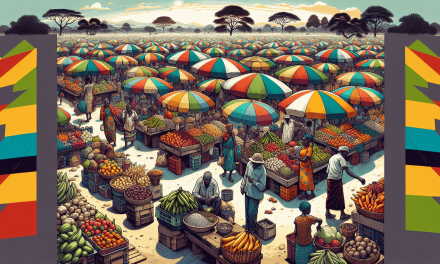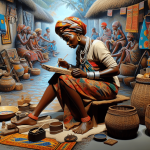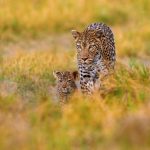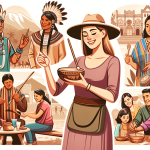Imagine stepping foot into Zambia, a vibrant country located in southern Africa. As you immerse yourself in the rich culture and diversity, you can’t help but wonder: what languages are spoken here? Nestled between Tanzania, Malawi, and Angola, Zambia is home to over 70 ethnic groups, each with their unique traditions and languages. From Bemba and Nyanja to Tonga and Lozi, the linguistic tapestry of Zambia reflects its diverse heritage. In this article, we will explore the fascinating array of languages spoken in this captivating country. Get ready to embark on a linguistic journey through Zambia’s linguistic kaleidoscope.
Official Language
English is the official language of Zambia. This means that it is the language used in government, administration, education, and business. It is also the language of formal communication in the media. As the official language, English is widely spoken and understood by the majority of Zambians. It plays a crucial role in connecting different ethnic groups and promoting unity and understanding among the diverse population of the country.
Major Languages
Zambia is home to a wide variety of major languages, each spoken by a significant portion of the population. These major languages are Bemba, Nyanja, Tonga, Lozi, Lunda, Kaonde, Luvale, Lunda, Nkoya, and Mambwe. Each of these languages has its own unique characteristics, vocabulary, and cultural significance. They are widely spoken in their respective regions and play a vital role in preserving the cultural heritage and identity of the different ethnic groups in Zambia.
Bemba
Bemba is one of the major languages in Zambia, primarily spoken by the Bemba people. It is widely spoken in the Northern, Central, Copperbelt, and Lusaka provinces of Zambia. Bemba is known for its rich oral tradition, including storytelling, proverbs, and folklore, which are essential for passing down cultural knowledge and values from generation to generation.
Nyanja
Nyanja is another major language in Zambia, commonly spoken by the Nyanja people. It is mainly spoken in the Eastern, Central, and Lusaka provinces of the country. Nyanja has different dialects, depending on the region. This language is known for its rhythmic and melodic nature, making it popular in music and poetry. Nyanja plays a significant role in daily communication and cultural expressions for the Nyanja-speaking communities.
Tonga
Tonga is a major language primarily spoken by the Tonga people, who reside in the Southern and Western provinces of Zambia. Tonga is characterized by its distinct click sounds, which make it unique among the Zambian languages. It is spoken in a melodious manner and has rich cultural traditions and rituals associated with it. Tonga is essential in preserving the history and heritage of the Tonga people.
Lozi
Lozi is the language of the Lozi people, who live in the Western Province of Zambia. It is an important major language in Zambia and is well-known for its use of metaphors and sayings. Lozi has a deep cultural significance and is often used during traditional ceremonies and gatherings. It has a formal and respectful tone, adding to its prestige and reverence among the Lozi community.
Lunda
Lunda is primarily spoken by the Lunda people in the North-Western Province of Zambia. It is a major language with its own unique grammar structure and vocabulary. Lunda has a strong connection to the cultural practices and beliefs of the Lunda people, including music, dance, and storytelling. This language serves as a means of preserving the Lunda heritage and passing down ancestral knowledge.
Kaonde
Kaonde is a major language spoken in the North-Western Province of Zambia. It is mainly associated with the Kaonde people. Kaonde has its own distinct phonetics and intonation patterns, making it easily recognizable. This language is deeply embedded in the cultural traditions and customs of the Kaonde community, reflecting their history, values, and way of life.
Luvale
Luvale is spoken by the Luvale people in the North-Western Province and parts of Western Province of Zambia. It is a major language with a wide range of dialects, each exhibiting its unique features. Luvale is known for its complex verbal structures and its use in storytelling and poetry. Luvale plays a significant role in the cultural preservation and unity of the Luvale people.
Nkoya
Nkoya is primarily spoken by the Nkoya people, who are mainly concentrated in the Western Province of Zambia. It is a major language that is vital for the preservation of Nkoya cultural identity. Nkoya has its distinctive phonetics and vocabulary, which reflect the unique history and traditions of the Nkoya community. This language is a source of pride and a means of cultural expression for the Nkoya people.
Mambwe
Mambwe is a major language spoken by the Mambwe people in the Eastern Province of Zambia. It is characterized by its complex grammar and distinct tonal patterns. Mambwe is an integral part of Mambwe cultural practices, including music, dance, and storytelling. This language serves as a medium for the transmission of cultural values and beliefs among the Mambwe community.
Minor Languages
In addition to the major languages, Zambia is also home to numerous minor languages. These include Chewa, Tumbuka, Lenje, Nsenga, Bisa, Chishinga, Chokwe, Kunda, and Soli, among others. While these languages may not have the same widespread usage as the major languages, they are still important for preserving the cultural diversity and heritage of the communities that speak them.
Indigenous Languages
Indigenous languages in Zambia play a crucial role in identity formation and cultural preservation. These include Ila, Lala, Lamba, Mbunda, and Ushi, among others. These languages are typically spoken by specific ethnic groups, and they reflect the unique histories, traditions, and practices of those communities. Indigenous languages are often used in traditional ceremonies, storytelling, and other cultural events, ensuring that the rich cultural heritage of Zambia’s diverse population is upheld.
Languages in Education
In Zambia, there is a policy to promote the use of local languages in education, especially in the early grades. This policy recognizes the importance of mother tongue instruction in facilitating effective learning and promoting a sense of identity among students. It allows children to develop strong foundational skills and a deeper understanding of concepts in their native language before transitioning to English as a medium of instruction in higher grades. This approach helps cater to the linguistic diversity of the country and promotes equitable access to education for all students.
Language Policy
Zambia has a language policy in place that seeks to protect and promote the use of indigenous languages. The policy recognizes the importance of linguistic diversity and the need to preserve the cultural heritage of different ethnic groups. It aims to ensure that all Zambians have the right to use and develop their native languages. Additionally, the policy encourages the use of local languages in various domains, such as media, literature, and cultural events, to celebrate and showcase the richness of Zambia’s linguistic and cultural mosaic.
English Proficiency
English proficiency in Zambia is relatively high due to its status as the official language. English is taught in schools and widely used in formal settings, such as government, business, and education. Many Zambians have a solid grasp of English, enabling effective communication across different regions and ethnic groups. However, proficiency levels may vary among individuals, with some being more fluent in English than others. Efforts are being made to improve English language education and promote a higher level of proficiency nationwide.
Regional Differences
Zambia’s linguistic landscape varies from region to region, with different major and minor languages being more prevalent in certain areas. For example, Bemba is dominant in the Northern and Copperbelt provinces, while Nyanja is widely spoken in the Eastern and Central provinces. This regional variation reflects the diverse ethnic composition of Zambia and the distribution of different language groups across the country. It also highlights the importance of linguistic diversity in shaping regional identities and fostering cultural pride.
Language Use in Urban Areas
In urban areas of Zambia, such as Lusaka and Copperbelt, English is the primary language used for communication. English is commonly spoken in business environments, schools, and government offices. However, many urban dwellers also speak their ethnic languages or local dialects, especially within their respective communities. Urban areas serve as melting pots of cultures and languages, with Zambians from different ethnic backgrounds interacting and exchanging linguistic and cultural expressions.
Language Use in Rural Areas
In rural areas of Zambia, indigenous languages play a more prominent role in daily communication and cultural activities. This is due to the strong ties between language, culture, and community identity. In rural villages, people predominantly speak their ethnic languages, passing down traditional knowledge, customs, and storytelling. While English may be understood and spoken to some extent, the use of local languages remains vital in preserving cultural heritage and maintaining social cohesion within rural communities.
In conclusion, Zambia is a linguistically diverse country, with English as the official language and numerous major, minor, and indigenous languages spoken across the different regions. These languages play an essential role in shaping cultural identity, promoting unity, and preserving the rich heritage of Zambia’s diverse ethnic groups. The language policy in Zambia recognizes the value of linguistic diversity and aims to preserve and promote the use of indigenous languages. English proficiency is high, but the use of local languages remains significant, particularly in education, rural areas, and cultural expressions. As Zambia continues to embrace its linguistic diversity, it highlights the importance of language in fostering cultural understanding and national unity.












